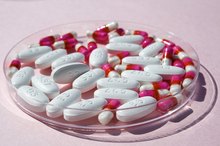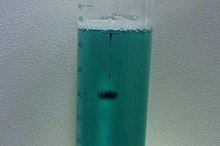Testing for Toxins in the Blood
When toxins enter the body, they are metabolized by the liver or kidneys. After long-term exposure to toxins or short-term exposure to high amounts of toxins, these organs can sustain damage, allowing toxins to build up in the blood and cause severe symptoms. Testing for toxins in the blood can be done with several simple blood tests.
If you are experiencing serious medical symptoms, seek emergency treatment immediately.
Drugs of Abuse
Drugs of abuse screening may be done for medical, legal, employment or athletic purposes. Examples of drugs detected by this test include:
- marijuana
- PCP
- opioid painkillers
- LSD
- anabolic steroids
- anabolic steroids
- MDMA
- alcohol
- methamphetamine
- date-rape drugs
The results of an initial screening are compared with specific cut-offs for each drug. Anything below the pre-determined cutoff is considered a negative result, and anything above the cutoff is considered a positive result. Because some illegal drugs are chemically similar to legal drugs, positive results are usually confirmed with a more sensitive and specific test method.
- Drugs of abuse screening may be done for medical, legal, employment or athletic purposes.
- Because some illegal drugs are chemically similar to legal drugs, positive results are usually confirmed with a more sensitive and specific test method.
Trace Minerals
What Is an SAP 10-50 Test?
Learn More
Trace minerals testing can be done if someone exhibits the signs and symptoms of a mineral toxicity. Toxicity can cause nausea, diarrhea, vomiting, skin rash, peripheral neuropathy or seizures. If undiagnosed and untreated, mineral toxicity can also result in failure of the liver and kidneys, shock and coma. High levels of trace minerals can occur with excess dietary intake, accidental occupational exposure and medical conditions that reduce the body's ability to excrete trace minerals at a normal rate.
- Trace minerals testing can be done if someone exhibits the signs and symptoms of a mineral toxicity.
- If undiagnosed and untreated, mineral toxicity can also result in failure of the liver and kidneys, shock and coma.
Heavy Metals
Heavy metals are metals that have a high density. They occur in nature and are used to manufacture many useful products. However, high concentrations of these metals in the body can cause organ failure, reduce the body's ability to manufacture new blood cells and increase the risk of developing certain types of cancer. During this test, blood is collected in a metal-free container so that the chance of sample contamination is reduced.
- Heavy metals are metals that have a high density.
- They occur in nature and are used to manufacture many useful products.
Toxicology Assay
What Drugs Are Tested for in a Urinalysis?
Learn More
Toxicology assays are used if a doctor suspects that someone has overdosed on drugs or if a patient is showing symptoms of toxicity or poisoning 1. This blood test detects excess levels of prescription and over-the-counter drugs, along with household substances, alcohol and illegal drugs. Household substances that can be detected by this test include antifreeze, cleaning products, insecticides and methanol. Once abnormal levels of a toxin have been diagnosed, this test can be repeated to help determine the effectiveness of treatment. Toxicology assays are usually performed on a stat basis, which means that laboratory technicians should rush the results or complete the test as soon as possible so that life-saving treatment can be started.
- Toxicology assays are used if a doctor suspects that someone has overdosed on drugs or if a patient is showing symptoms of toxicity or poisoning 1.
- Toxicology assays are usually performed on a stat basis, which means that laboratory technicians should rush the results or complete the test as soon as possible so that life-saving treatment can be started.
Related Articles
References
Writer Bio
Leigh Zaykoski has been a writer and editor for six years. Her medical writing has appeared on dozens of websites. Zaykoski attended the University of Pittsburgh and Keystone College, studying microbiology and business administration. She is currently pursuing a medical writing certification.








